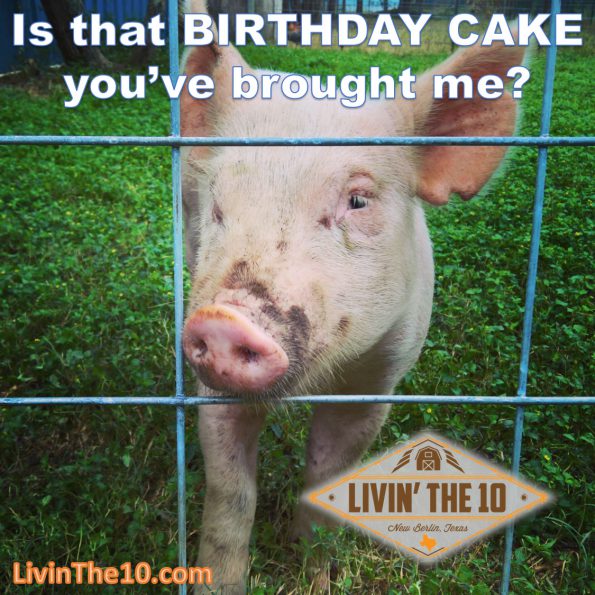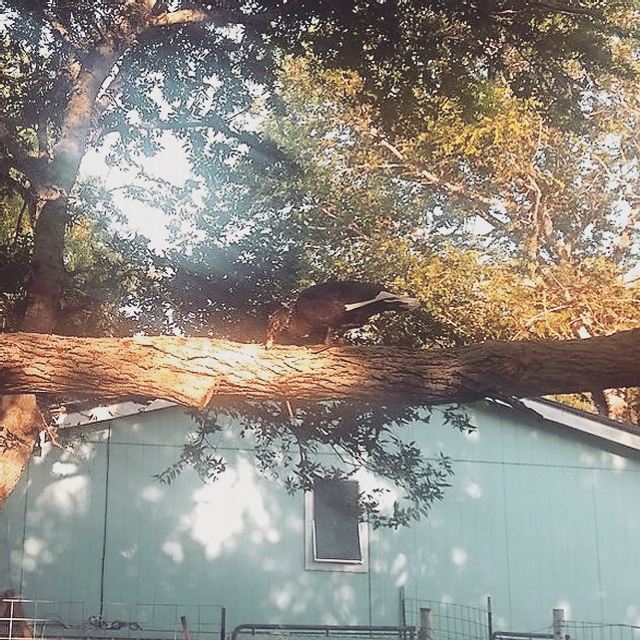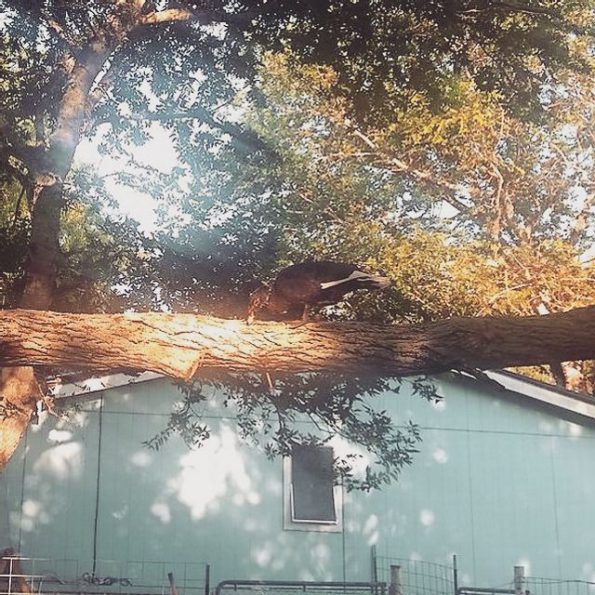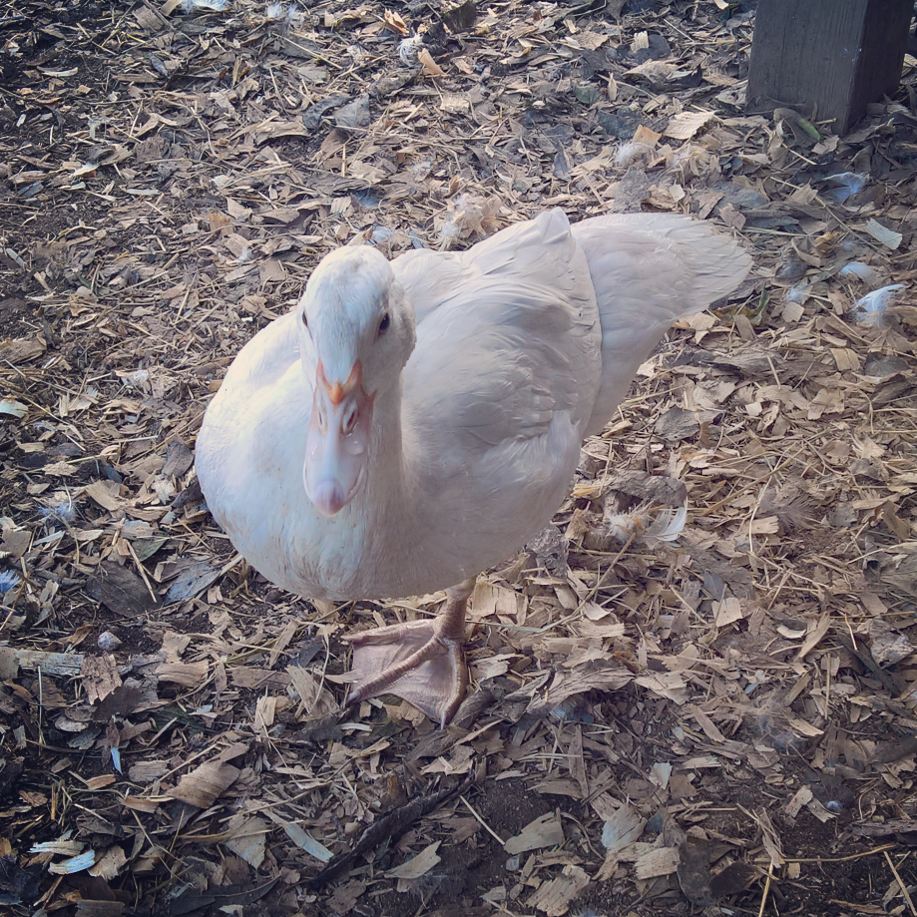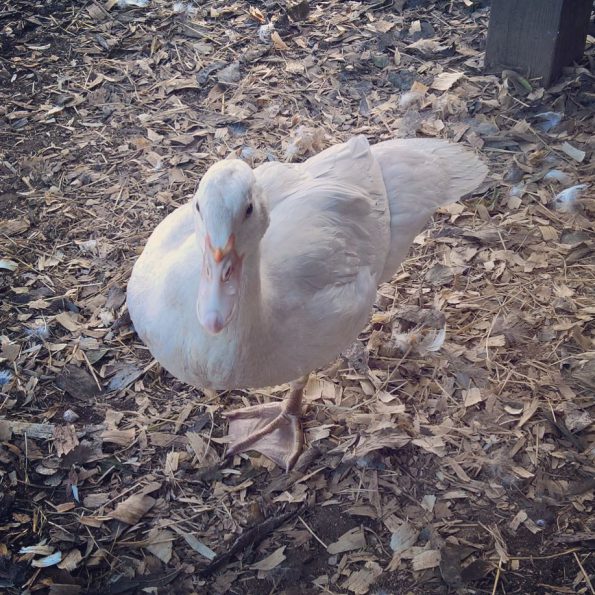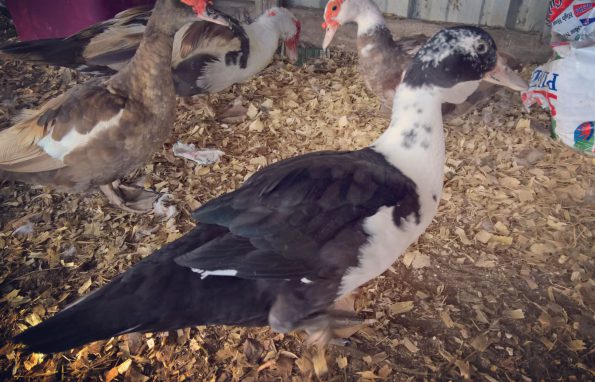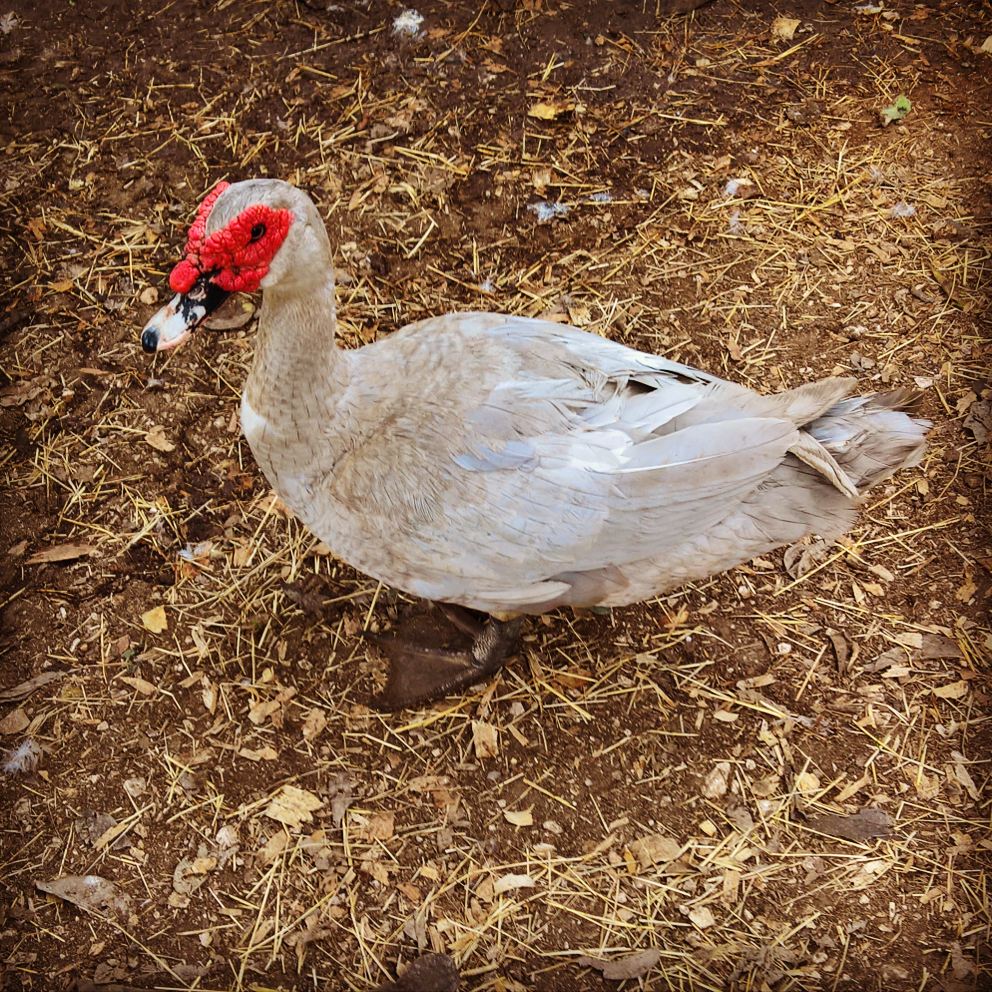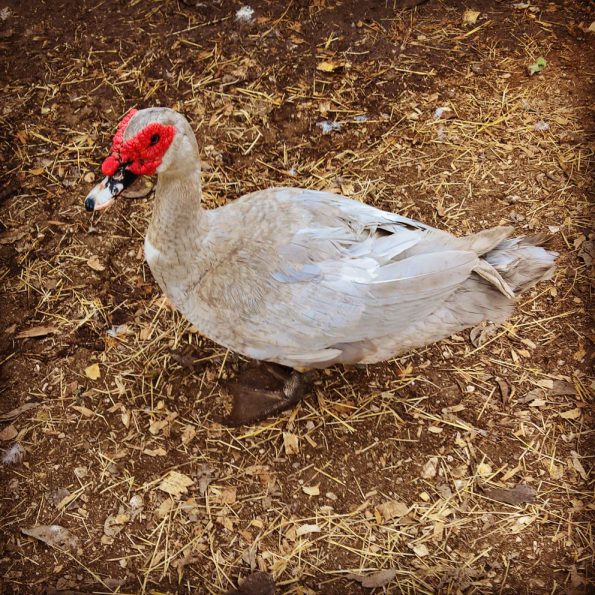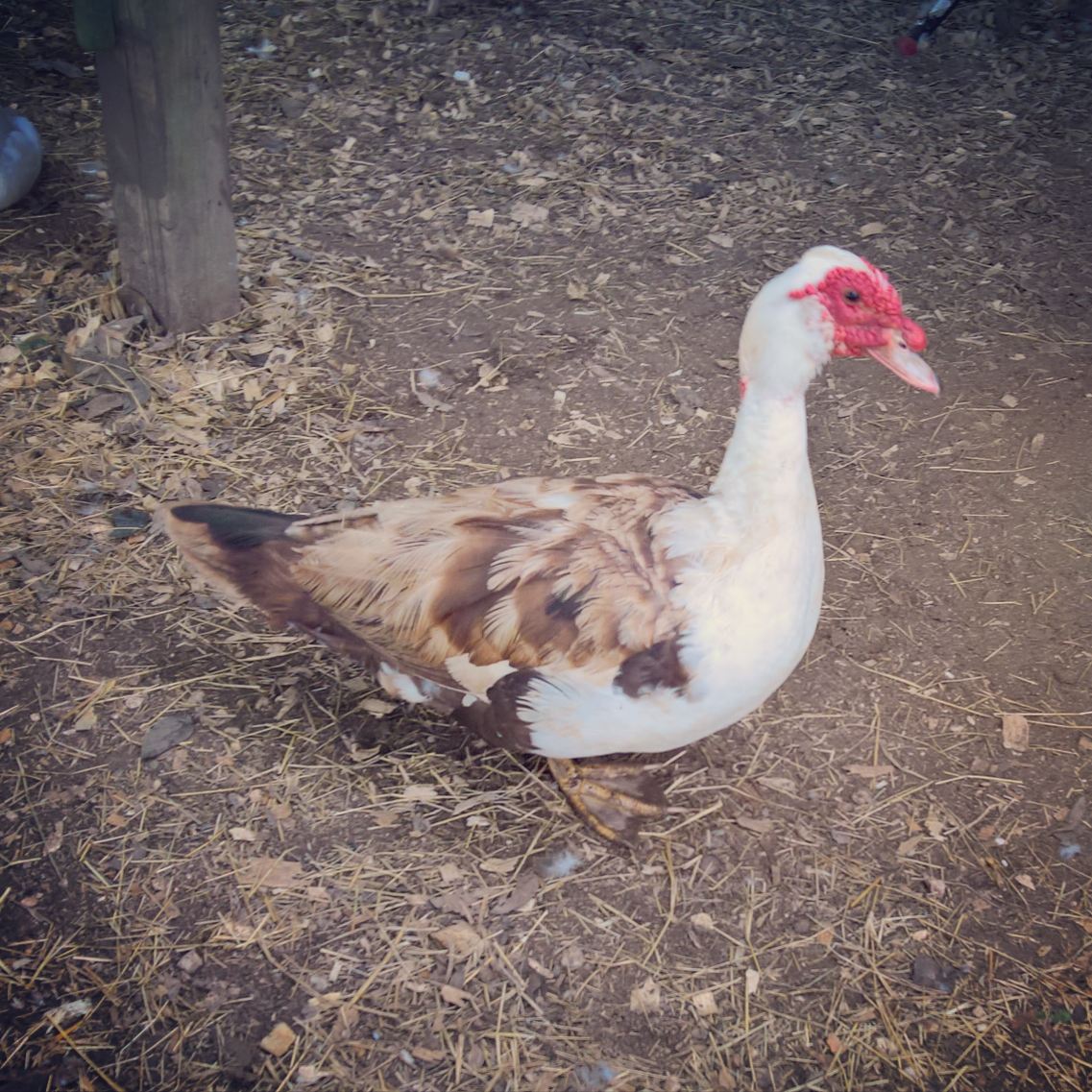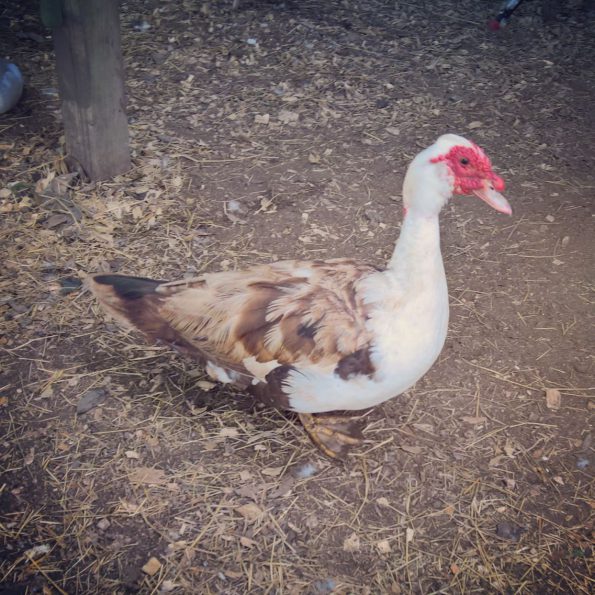We started the year with one dog (Charlie) and one cat (Jayden). Over the year, we added – and subtracted – many animals. On the farnch, every animal has a purpose, although there are still a couple of animals that I’m wondering about.
Dogs
Max, the Border Collie. When Max developed a taste for fresh chicken, we found him a new home with a family down the road. They have lots of kids, and lots of land, and Max is very happy with them.
Bryan, the Great Pyrenees. Bryan was a great dog. Then one day, he snarled and turned on Melissa near the kids, so Bryan had to go.
Buddy, the Spaniel. 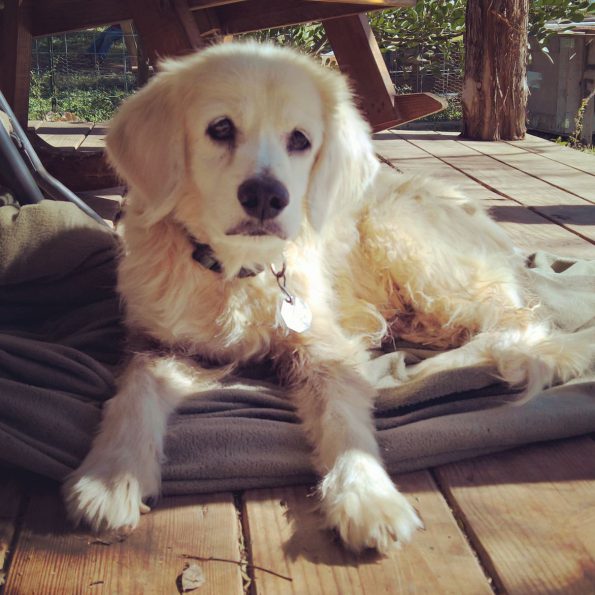 Buddy retired out to Livin’ The 10 from the hustle and bustle of life with my sister and nephew, and enjoyed several months with us. On New Year’s Eve, Buddy decided it was his time to journey on, and he ran away.
Buddy retired out to Livin’ The 10 from the hustle and bustle of life with my sister and nephew, and enjoyed several months with us. On New Year’s Eve, Buddy decided it was his time to journey on, and he ran away.
Cats
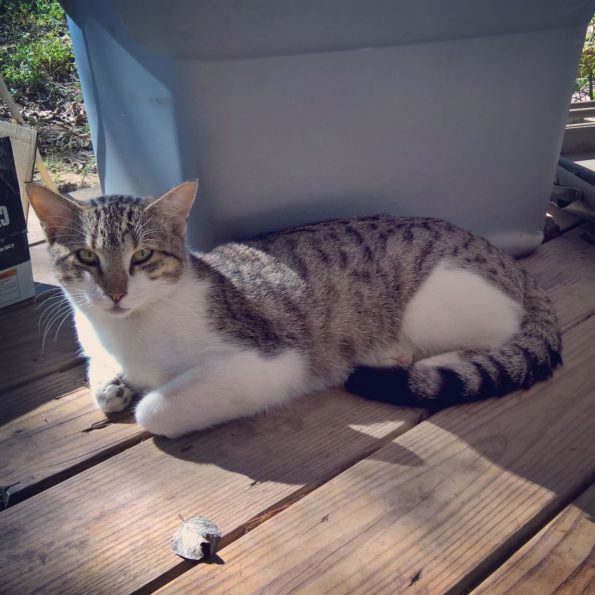 When my dad learned that we were looking for a good mouser, he set out to trap one of the kittens from a litter a roving mamma cat deposited in their yard. Opal was a little spitfire when he arrived, and has since become a very loving and affectionate cat as well as a good mouser.
When my dad learned that we were looking for a good mouser, he set out to trap one of the kittens from a litter a roving mamma cat deposited in their yard. Opal was a little spitfire when he arrived, and has since become a very loving and affectionate cat as well as a good mouser.
 We acquired Sapphire from our friends Mike and Sue Laprise. Well, actually, we acquired her from one of their many transient cats. Sapphire is still the runt, but she’s becoming a good mouser.
We acquired Sapphire from our friends Mike and Sue Laprise. Well, actually, we acquired her from one of their many transient cats. Sapphire is still the runt, but she’s becoming a good mouser.
Chickens
Early on, we were not very fortunate with chickens. Michael and Sue Laprise gave us our first six Red Sexlinks. Only one remains from that original six.
The Original Six
Over the year, Mom Mom and Pop Pop (Pop Pop mostly) took the kids on adventures to Moore’s Feed Store in San Antonio, arriving back at the farnch with chickens, ducks, turkeys and rabbits.
I don’t recall how many chickens we’ve lost to predators. I know it’s been at least a dozen. Getting the donkeys really helped curtail the losses. Adjusting our dog population helped as well. We still lose one every now and then. Sometimes they run off, or a hawk gets lucky. But now losing one is a rare occurrence, not an everyday (or every-week) one.
Of course, chickens – once they’re old enough – produce eggs. When Pop Pop decided he would buy eggs from us, Eryk bought his own chicken (so that he would get a larger share of the profits). Then, he industriously used his birthday money to buy an incubator. It’s been a little over a month, and when we checked the incubator a few minutes ago, there’s a small crack in one of the eggs. We (we being Eryk) should have our first batch of “home grown” chickens (and ducklings) over the next week or so.
Ducks
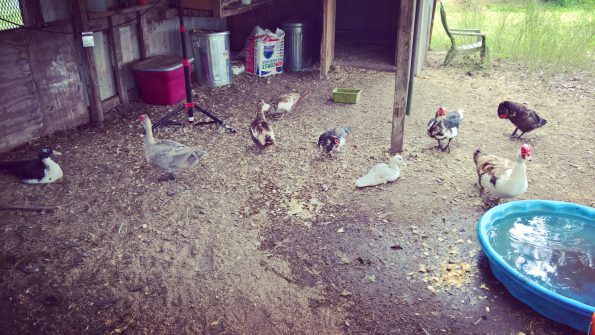 Our friends, Chris and Elizabeth Coats generously supplied our first (and third) flock of Muscovy ducks. We lost one of the original five to a predator last summer. Then we added a flock of four Muscovy’s (you guessed it – another Craigslist find). In the fall, my dad bought three ducklings, but none of them made it. Fortunately, the two that hatched here survived. Earlier this year, the Coats’ brought us another round of 11 ducklings, and 10 are still going strong – bringing the total count to 19 ducks…plus Eryk has a couple of eggs in his incubator.
Our friends, Chris and Elizabeth Coats generously supplied our first (and third) flock of Muscovy ducks. We lost one of the original five to a predator last summer. Then we added a flock of four Muscovy’s (you guessed it – another Craigslist find). In the fall, my dad bought three ducklings, but none of them made it. Fortunately, the two that hatched here survived. Earlier this year, the Coats’ brought us another round of 11 ducklings, and 10 are still going strong – bringing the total count to 19 ducks…plus Eryk has a couple of eggs in his incubator.
Rabbits
Like the chickens, we were not very fortunate with the rabbits early on. The property sat vacant for over a year, and snakes and other varmints figured they owned the place. We lost a few rabbits to snakes before we reinforced the hutch. The three that have made it this far are a good, healthy bunch. The female had her first litter a few weeks ago. Unfortunately, none survived. But, we’ve learned some valuable lessons on how to better care for rabbits. Good news is that the breed like…well…rabbits.
Guineas
 One of the many acquisitions from Moore’s included six guineas. Guineas are an alarm animal. They will alert the rest of the flock to perceived danger – be it air or ground-based predators. They tend to spend most of their time with the chickens. And for the most part, they integrate well. Although, they do tend to get after a couple of the chickens now and then. Until Roo (the rooster) steps in, that is.
One of the many acquisitions from Moore’s included six guineas. Guineas are an alarm animal. They will alert the rest of the flock to perceived danger – be it air or ground-based predators. They tend to spend most of their time with the chickens. And for the most part, they integrate well. Although, they do tend to get after a couple of the chickens now and then. Until Roo (the rooster) steps in, that is.
Pigs
When we were looking for land, one of our criteria was that there had to be no restrictions. In South Texas, feral hogs are a big problem, so a lot of land has “no hog” restrictions. Fortunately, we found New Berlin – the last Bastion of Freedom in the U.S. – where you actually come very close to owning your own property.
For Iain’s 7th birthday, he wanted a pig. Grandma obliged, and Iain picked out Pinky. Pinky eats like, well, a pig, and has gotten rather large. But when he was smaller and cuter, we snapped a few photos, and he now adorns the Livin’ The 10 “Happy Birthday” eCard.
When Macy’s 5th birthday rolled around a few months later, she decided that she, too, wanted a pig. Grandma again obliged, and we brought home Sunflower. Sunflower is approaching maturity, so we should have our first batch of “bacon seeds” going in the next few months.
Turkeys
To put it bluntly, we suck at raising turkeys. Dad bought four babies, and over the course of a couple of months, they all died. One lasted a good long while, and I think that if we’d had the donkeys and dog issues fixed, he would have survived. We may try turkeys again this year. Honestly, though, I think – at least in the case of turkeys – it’s better to wait until you can focus on them and not 20 other things.
Donkeys
I never imagined myself a donkey rancher, but we’ve pretty much dedicated a quarter of the property to “donkeydom.” Well, to be honest, the goat is in there, too. And one of the donkeys is actually a mule. So “donkey-goat-mule-dom,” I guess, is more accurate.
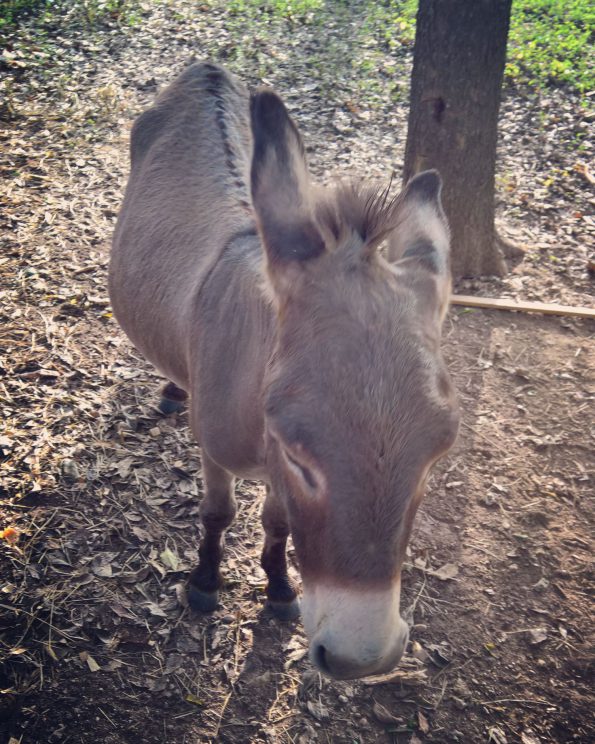 We didn’t intend to have a herd of donkeys. Melissa found Chocolate and Vanilla on a ranch near Castroville, Texas. Mocha and Chip came from Melissa’s friend
We didn’t intend to have a herd of donkeys. Melissa found Chocolate and Vanilla on a ranch near Castroville, Texas. Mocha and Chip came from Melissa’s friend 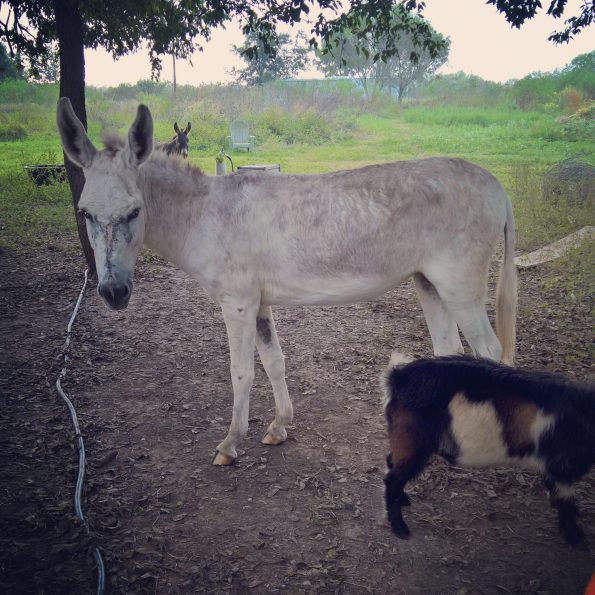 Beverly, who lives with some folks who love animals, and sort of run their own rescue program (i.e. they can’t say no). After several years, they decided to downsize, and so we’re acquiring some of their animals over time.
Beverly, who lives with some folks who love animals, and sort of run their own rescue program (i.e. they can’t say no). After several years, they decided to downsize, and so we’re acquiring some of their animals over time.
Since we got the donkeys, we’ve seen a dramatic drop in external predator activity. I have to insert “external” in there because Bryan and Max were somewhat of an “insider threat” for a while. Except for some rivalry between Chocolate and Beau (the horse), the donkeys get along very well with all the other animals.
Goats
Turtle the Goat came 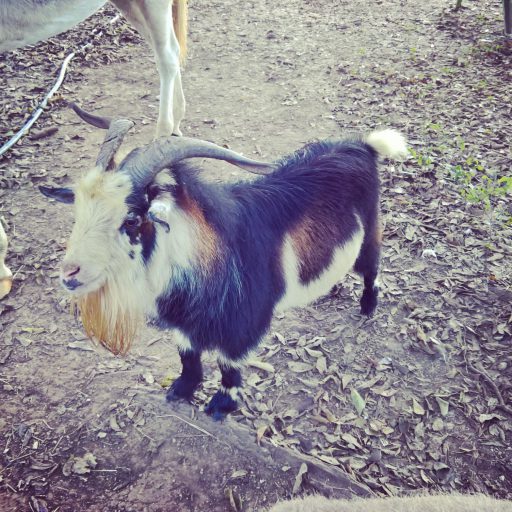 with Chocolate and Vanilla. He’s been a cute little stinker, and he seems to get along well with the other animals. He does find more than his share of mischief, though. He’s learned how to open (or otherwise thwart) gates, and he’s figured out how to climb fencing.
with Chocolate and Vanilla. He’s been a cute little stinker, and he seems to get along well with the other animals. He does find more than his share of mischief, though. He’s learned how to open (or otherwise thwart) gates, and he’s figured out how to climb fencing.
Horses
 Beau came to us from Melissa’s friends who are downsizing their menagerie. I’ve never been around horses much, and so I’m beginning to understand the bond between horse and rider. Beau is like an overgrown puppy dog. He is very affectionate, and very communicative, once you learn his language.
Beau came to us from Melissa’s friends who are downsizing their menagerie. I’ve never been around horses much, and so I’m beginning to understand the bond between horse and rider. Beau is like an overgrown puppy dog. He is very affectionate, and very communicative, once you learn his language.
Sheep
 Mercy also came to us from Melissa’s friends. She and Beau came the same day. Mercy’s mother rejected her mother, and Melissa’s friends hand and bottle fed her. She has become so friendly and affectionate around us, that there are times I wonder whether she realizes that she’s not one of our kids.
Mercy also came to us from Melissa’s friends. She and Beau came the same day. Mercy’s mother rejected her mother, and Melissa’s friends hand and bottle fed her. She has become so friendly and affectionate around us, that there are times I wonder whether she realizes that she’s not one of our kids.
…and beyond
This next year, we’re looking to “organically” add pigs and rabbits. Sunflower the Pig should have her first litter this year. And, we’re hopeful that when our female rabbit has her next litter that we’re all better prepared. Beyond that, I think we’re going to slow down our aggressive animal accumulation rate this year. Although, the back pasture would work well for beef….


